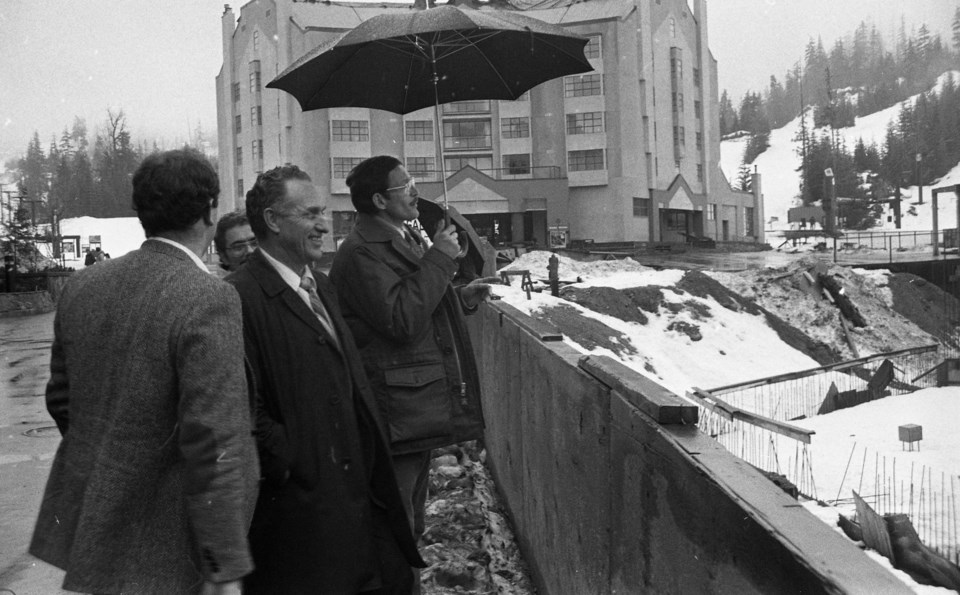In the early 1980s, just as the development of Whistler Village was starting to boom, the economy bottomed out and interest rates skyrocketed. Whistler Village was left with 27 unfinished lots as owners, developers, and contractors were going bankrupt at unprecedented levels. Remembering the mess left behind as construction halted, former Whistler Mayor Drew Meredith said, “Imagine standing in Village Square looking up towards Mountain Square and all you see is half-finished concrete foundations with rebar sticking out of it. Rusty, dirty rebar. The stroll was there, but on both sides of the stroll was just chaos. Very tough to sell that to anybody who wants to come for a holiday.”
Canada’s inflation had accelerated throughout the 1970s, reaching higher than 10 per cent in 1980. To curb inflation, the Bank of Canada raised interest rates to a peak of 21 per cent, however inflation remained high. During this time, interest rates for home loans reached 22 per cent, and Canada went into a recession. To top it off, in November 1981, the federal government ended the Multiple-Use Residential Building (MURB) program of tax credits. With multiple-use residential on the second and third floor of every building, much of Whistler Village was constructed with the understanding that MURB would provide tax incentives for investors. With the MURB program coming to an end, many investors poured the foundations quickly to make use of these incentives before it was too late.
While some developments in the new Whistler Village had opened, most were just a foundation as the economic crunch really hit. Whistler had prioritized small developers in the building of the Village, and many struggled to continue and could not pay their land taxes.
The Whistler Village Land Company (WVLC) was a non-profit arm of the municipality incorporated in 1978 to oversee the sale and development of the Village. As land was sold, the WVLC would use the income to pay its liabilities, including loan repayments and development costs for municipal assets, notably the Arnold Palmer Golf Course and the Resort Centre intended to host a pool and ice rink (eventually the province dictated that the Conference Centre would be built instead). However, in the early 1980s, when more lots were placed on the market they would not sell. To further financial woes, in July 1982, only 60 per cent of taxes were paid to the municipality on time, and the municipality could charge a maximum of 10 per cent on late payments, less than the bank’s interest rates. Between 1981 and 1982, the municipality’s capital budget was almost halved from $1 million to $650,000 and in 1982 municipal staff took a 2.5-per-cent pay cut.
With finances in dire straights, WVLC staff were let go and WVLC operations transferred to the municipality. With debts of approximately $8 million, no way to pay them, and creditors knocking, concerns were mounting that the banks would repossess assets worth far more than the loan amount. Banks could then sell these lands independently to developers, while the government would get nothing for the sale and still have to pay liabilities.
Whistler went to the provincial government for assistance. On Jan. 6, 1983, it was announced that Whistler Land Company Developments, a new Crown corporation, had acquired the assets and liabilities of WVLC for $1. Government studies showed that all outstanding debts would be paid with future land sales and continued development would create many jobs, plus the expected revenue from tax and tourism. While there was uproar at the time about a taxpayer bailout, the provincial government went on to recoup far more than the initial investment through the land sales of Village North, and today Whistler brings in 25 per cent of B.C.’s annual tourism revenue.
Hear how some of the community dealt with the economic crisis next week in Whistler at 22 per cent interest—Part 2.




